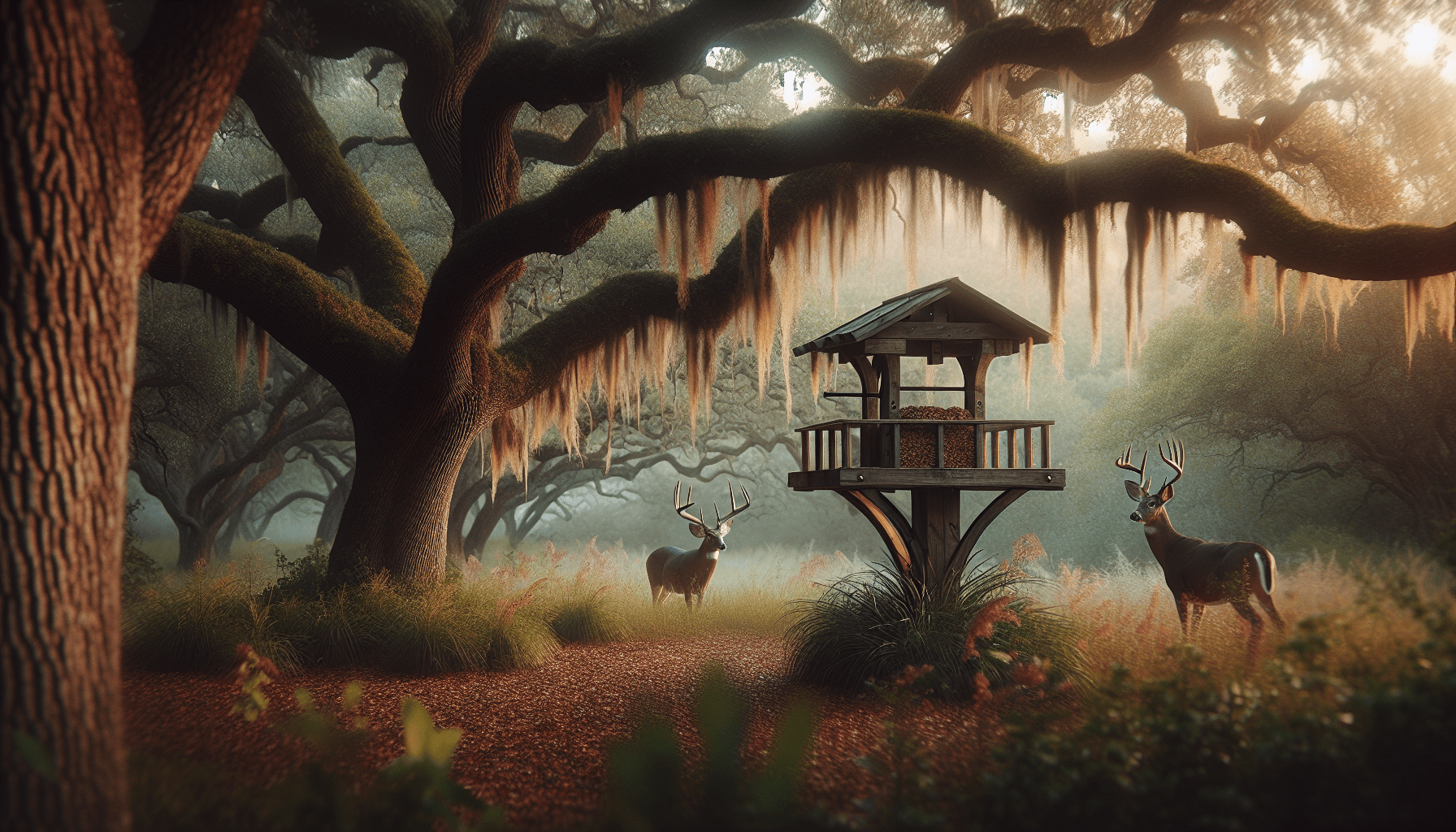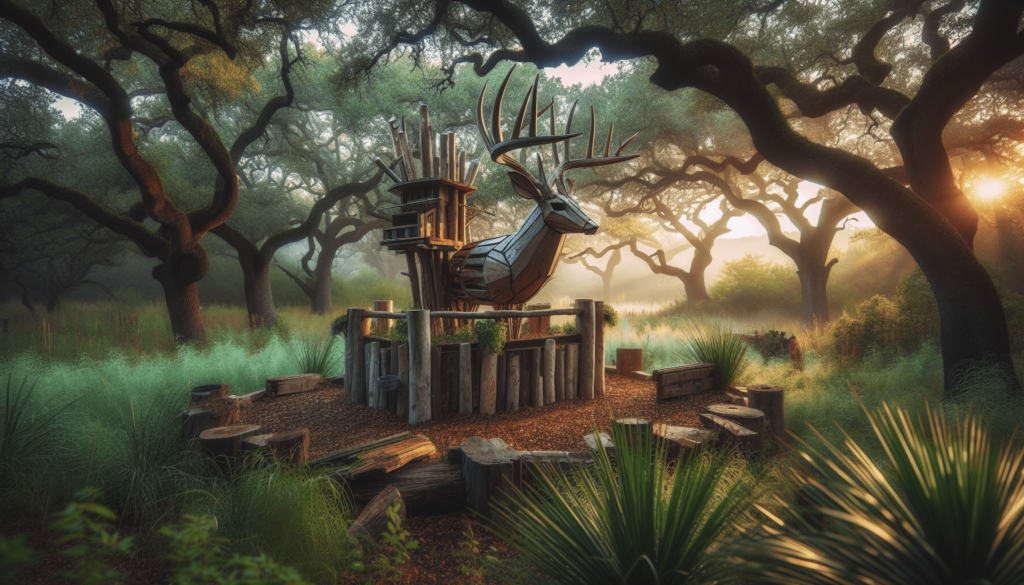
What if you could unlock the secret to attracting those elusive trophy bucks straight to your property? Imagine the thrill of watching them visit your feeder, showcasing their impressive antlers in the golden light of dusk. With the right strategies in place, you can create an environment that encourages these majestic creatures to frequent your area.
Understanding the Territorial Behavior of Bucks
Understanding how bucks interact with their environment is essential. Bucks, especially mature ones, are highly territorial and will often roam larger areas in search of food sources, mating opportunities, and safe habitats. When it comes to feeders, they have their preferences, and knowing this can make a world of difference.
The Seasonality of Feeding Habits
Within their yearly cycle, deer exhibit distinct feeding behaviors during different seasons. For instance, during fall and winter, their need for energy spikes as they prepare for the rut and harsh conditions ahead. This is a prime time for you to offer enticing feed options.
The Influence of Weather Conditions
Weather plays a significant role in deer movement. After a light rain, the scents of the surrounding area become more pronounced, making it ideal for bucks to roam and search for food. Therefore, timing your feeder setup just before a change in weather can increase your chances of success.
Selecting the Right Feeder
Now that you understand their behavior, let’s talk about the feeders themselves. Not all feeders are created equal, and selecting the right type for your specific needs is crucial.
Types of Feeders
| Feeder Type | Description | Pros | Cons |
|---|---|---|---|
| Gravity Feeder | A basic design that releases food via gravity. | Simple and reliable; low-maintenance. | Limited control over feed availability. |
| Timer-Activated | Dispenses food at predetermined times. | Controlled feeding times; can manage deer access. | Requires power or batteries; potentially more complex. |
| Spin Feeder | Spins to distribute feed over a wide area. | Covers more ground; attracts multiple deer. | Can waste feed and create mess. |
| Trough Feeder | Holds feed in a trough-like structure. | Prevents spillage; ideal for multiple deer. | Can be expensive; limits access to smaller deer. |
Selecting a feeder that suits the terrain and the deer’s appetite will set the foundation for success.
Size Matters
The size of the feeder can also influence deer behavior. Larger feeders provide more food, which can attract a greater number of deer, but they can also pose challenges in maintaining the feed and preventing spoilage.

The Importance of Feed Selection
Attracting trophy bucks isn’t just about having a feeder; it’s also about the quality of food you provide. What you choose to put in those feeders can either pique interest or drive them away.
Nutritional Value
Deer are browsers, not grazers, and they require a balanced diet for optimal health. A mix of protein, carbohydrates, and essential minerals is vital. Consider including:
- High-Protein Pellets: Helps in antler growth.
- Corn: A good energy source, but shouldn’t be the sole option.
- Soybeans: High in protein and greatly attracts deer.
- Mineral Blocks: Supports overall health and antler development.
Seasonal Feeding Strategies
Adapting your feeding strategy according to the seasons is crucial. For instance, during late summer or early fall, incorporating protein-rich feeds can assist in antler growth. In winter, providing high-energy foods like corn becomes essential for their survival.
Creating a Comfortable Environment
Just placing a feeder isn’t enough; you also need to create a welcoming environment for the deer. They need to feel safe and comfortable in order to return regularly.
Choosing the Right Location
Location of your feeder can significantly impact its effectiveness. Consider the following:
- Natural Cover: Place the feeder near thickets or tree lines to provide deer with a sense of safety.
- Distance from Human Activity: Avoid placing feeders close to areas with high human activity; this can deter bucks.
- Access to Water Sources: Ensure the feeder is near water sources, as deer need to hydrate regularly.
Scent Control
Deer have an exceptional sense of smell. To encourage movement to your feeder, minimizing human scent is essential. Wear gloves when refilling your feeders and avoid wearing heavily scented lotions or soaps.

Using Trail Cameras for Monitoring
Monitoring your feeders with trail cameras can provide valuable insights into deer behavior. You’ll be able to see what’s visiting, when they’re coming around, and adjust your strategies accordingly.
Setting Up Your Cameras
- Placement: Set your camera at least 10-15 yards from the feeder at the deer’s eye level.
- Timing: Program your camera to take photos throughout the day and night to capture diverse activity periods.
- Angle: Use a wide-angle lens to capture more deer in a single shot.
Analyzing the Data
Once you have captured footage, spend some time analyzing it. Look for patterns in the times and frequency of buck appearances. This will guide your feeding strategy and help you maximize the effectiveness of your feeder.
Timing Your Feedings
Feeding regularly and strategically is crucial. Knowing when to refill and the types of food to provide at different times can influence the buck’s movements.
Scheduling Feedings
- Frequency: Generally, refilling your feeder every 7-10 days will maintain a steady feeding schedule.
- Time of Day: Early morning and late evening are typically the best times for deer activity, so consider refilling around these times.
- Event-Based Refills: If you know a significant weather change is coming or a hunting season is about to start, you might want to adjust your feeding schedule to attract more deer.
Decoys and Attractants in Conjunction with Feeders
While feeders effectively attract deer, you can amplify your efforts by incorporating decoys and scent attractants.
Types of Decoys
Decoys give the illusion of another deer in the vicinity, which can trigger curiosity and encourage bucks to investigate. Consider using:
- Buck Decoys: These can provoke testosterone-fueled engagement.
- Doe Decoys: These can attract bucks during the rut.
Scent Attractants
Scent plays a pivotal role; a nearby scent can entice deer. Investigate the following:
- Doe Estrous: During the rut, this is highly effective for attracting bucks.
- Foilage Scents: Natural scents from nearby plants can lure deer in.
When utilizing these alongside your feeders, be mindful of the wind direction to ensure that scents are carried toward your feeders.
Managing Pressure on Your Property
Pressure from hunting and human activity can hinder your attraction efforts. It’s vital to manage how and when you hunt to ensure deer return to your property regularly.
Hunting Strategy
- Limit Harvest: Be selective about which deer you harvest to maintain the population and health of the buck herd.
- Time It Right: Hunt during off-peak times for deer activity.
- Reduce Human Presence: Limit your movements in and around the feeding areas.
Creating Sanctuaries
Consider designating ‘sanctuary areas’ where deer can feel safe from both human activity and predators. These pockets can significantly enhance the overall health of the local deer population and keep trophy bucks returning.
Continuous Education and Adaptation
The world of deer management is always evolving. Stay informed and be willing to adapt your strategies based on what works best in your unique environment.
Networking
Connect with other deer hunters and property owners in your area. By sharing experiences and insights, you can learn new and effective methods to improve your deer attraction strategies.
Research and Resources
- Books and Articles: Invest time in reading research materials focused on deer management.
- Workshops and Seminars: Attend local workshops to understand the latest strategies and insights from deer biologists.
Trial and Error
Don’t be afraid to try new things. What works for one property may not work for another, so keep experimenting with different feeders, foods, and strategies until you find the perfect combination.
Conclusion
Attracting trophy bucks with feeders is an engaging endeavor that requires patience, knowledge, and a dash of creativity. By understanding their behavior, choosing the right feeder and feed, creating a comfortable environment, and employing up-to-date strategies, you can significantly improve your chances of luring in those magnificent bucks. As you embark on this journey, remember that each season presents a new opportunity to learn and refine your approach. Enjoy the process, celebrate the small victories, and, most importantly, appreciate the beautiful wildlife that surrounds you. Your efforts could reward you with those unforgettable encounters you’ve always dreamed of.





